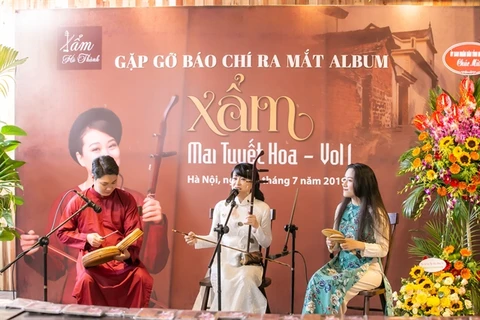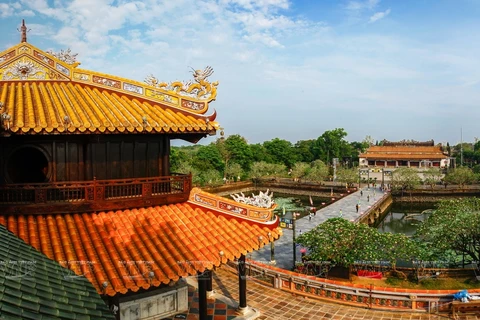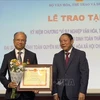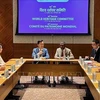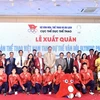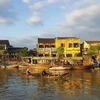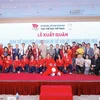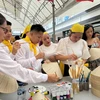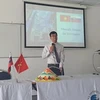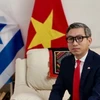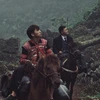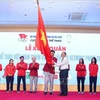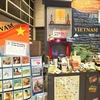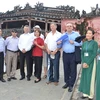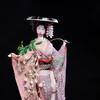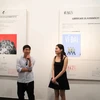Hanoi (VNA) – Cultural experts have suggested diversifying preservation methods of UNESCO-recognised Then singing, on the basis of its original values.
“Then” singing practice of ethnic groups of Tay, Nung, Thai was named in the list of Intangible Cultural Heritages of Humanity during the 14th session of the UNESCO’s Intergovernmental Committee for the Safeguarding of Intangible Cultural Heritage on December 12.
According to the committee, the practice has met five criteria for being named in the list.
Then practice is an essential part in the spiritual life of the Tay, Nung and Thai ethnic groups, and practised in many northern provinces, including Cao Bang, Bac Kan, Thai Nguyen, Lang Son, Ha Giang, Quang Ninh, Son La, Lai Chau, Lao Cai, Bac Giang and Yen Bai, and the Central Highlands province of Dak Lak.
It is said to have originated in the late 15th century during the rule of Mac Dynasty. Legend has it that in Mac Dynasty, there were two kings who had special love for music and singing. They developed a handmade gourd lute called dan tinh and established two singing troupes to perform at the royal court. Ordinary people found it interesting and started learning it, preserving this form of singing till date.
Then performance reflects the cultural characteristics of those ethnic groups, from music to dancing and musical instruments.
The ethnic groups believe Then singing was handed down from the God belonging to a mysterious world to which only “Ong Then” and “Ba Then” can contact.
During rituals, “Ong Then” and “Ba Then” sing and play a musical instrument at the same time while presenting offerings to the god, thus contacting the God on behalf of the community and asking him for things such as good health, bumper crops, happiness and a long life.
As a unique combination of music and song, Then practice is traditionally accompanied by a handmade gourd lute, called Dan Tinh or Tinh Tau.
The art form, which combines a wide range of arts such as literature, music, painting and performance, has had an impact on local and national identities through its influence on literature, language, poetry, music, dance, rituals and spiritual practices.
Closely linked with the spiritual life of ethnic minority groups who often use ceremonial offerings to treat illnesses, Then practice is also seen as a therapy, together with medicine, helping to ease the worries of patients and their families.
Then practice was included in Vietnam’s list of intangible heritages in 2012.
The UNSCO’s recognition has pose the task of preserving and promoting heritage values of the art for Vietnam during the modern time, said Professor and Doctor of Science To Ngoc Thanh, President of the Vietnamese Folk Arts Association.
According to Dang Hoanh Loan, former deputy head of the Vietnamese Institute of Musicology, many musicians have recomposed lyrics of Then songs, making them familiar with modern audience.
Since its inception in 2005, the national festival of the art of Then singing and Tinh gourd lute of the Tay, Nung and Thai ethnic groups has contributed to honouring artisans and introducing the art to domestic and foreign tourists, he said.
Loan also emphasised the need to step up the training of Theng singing among youngsters, and suggested teaching the folk genre of music at schools, firstly local ones.
Theng singing clubs in localities should be maintained to spread the art among the community, he added.
 Artisan Hoang Duc Thang in Ha Giang province is guiding a kid how to use Tinh gourd lute. (Photo: VietnamPlus)
Artisan Hoang Duc Thang in Ha Giang province is guiding a kid how to use Tinh gourd lute. (Photo: VietnamPlus) Competent agencies are also compiling dossiers for Xoe Thai dance and Cham pottery making art to seek UNESCO’s recognition, according to the Ministry of Culture, Sports and Tourism./.


